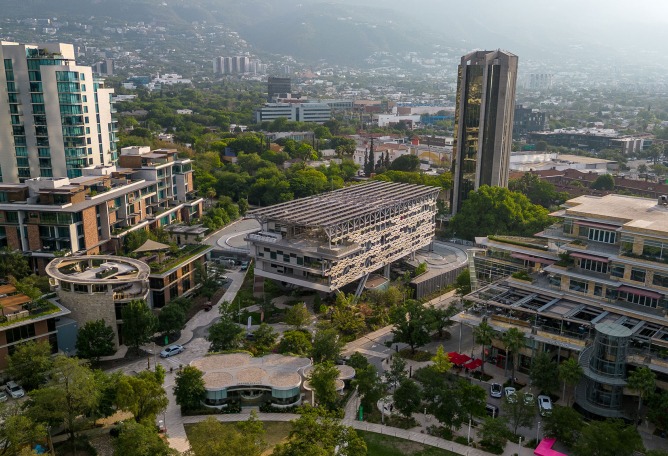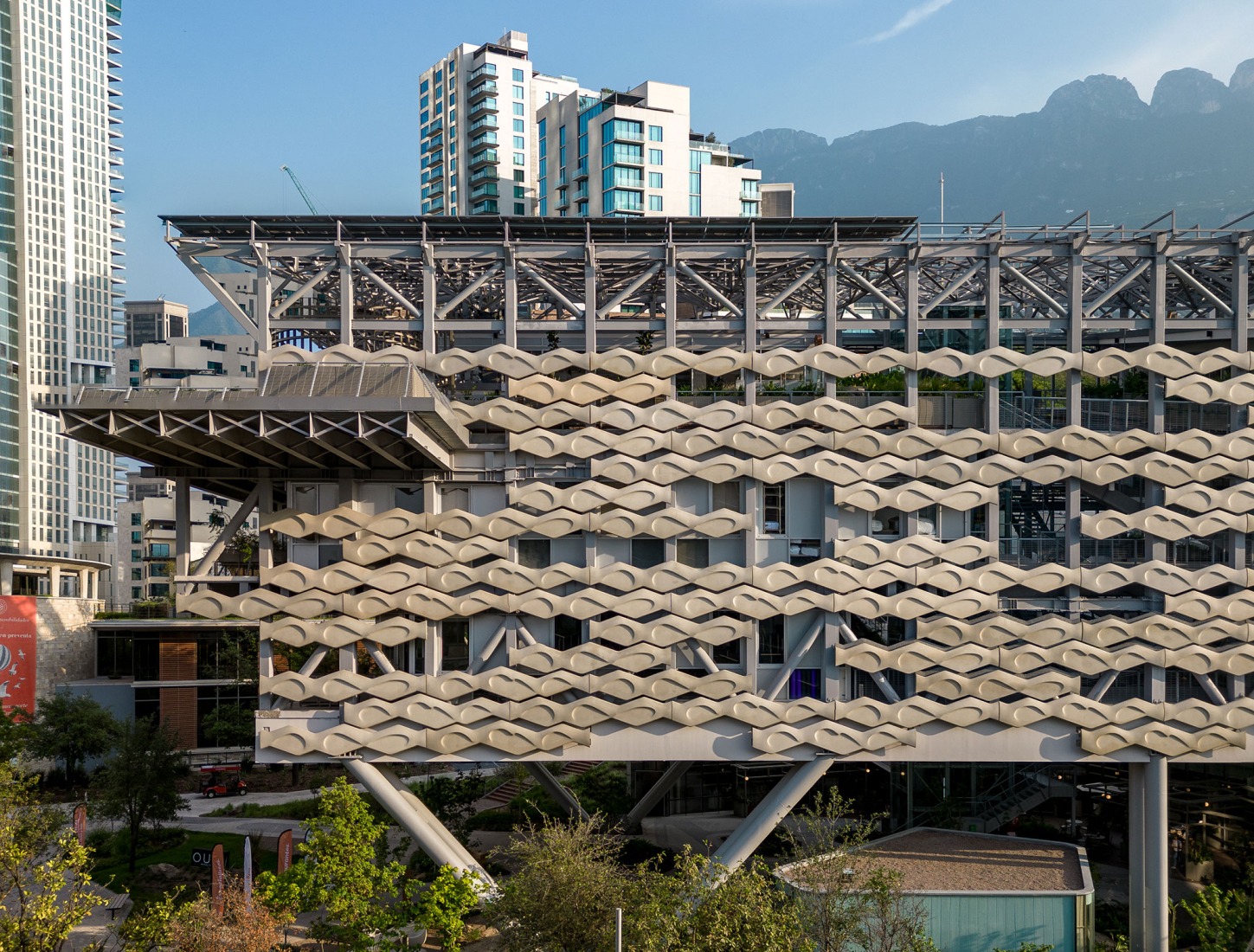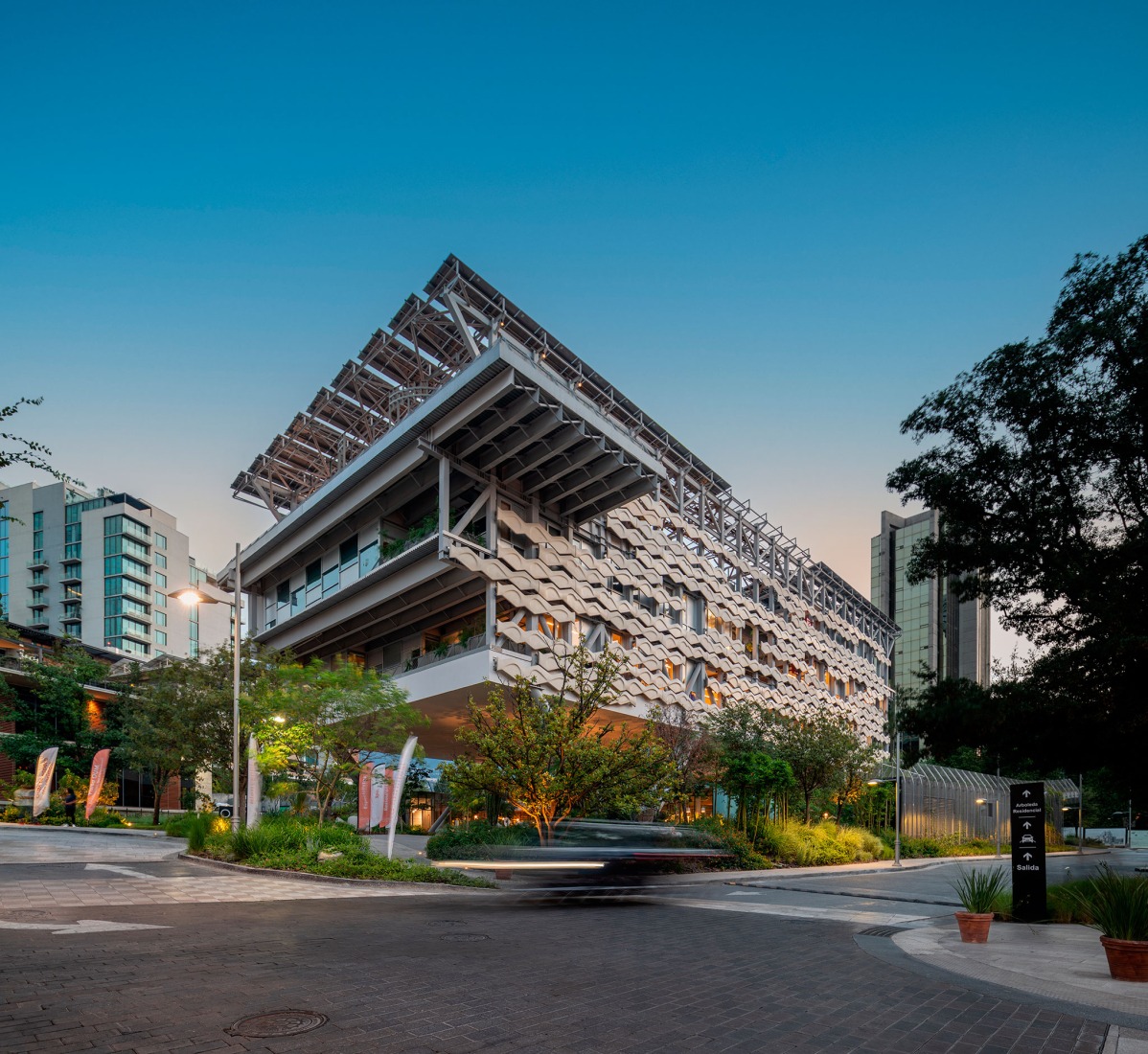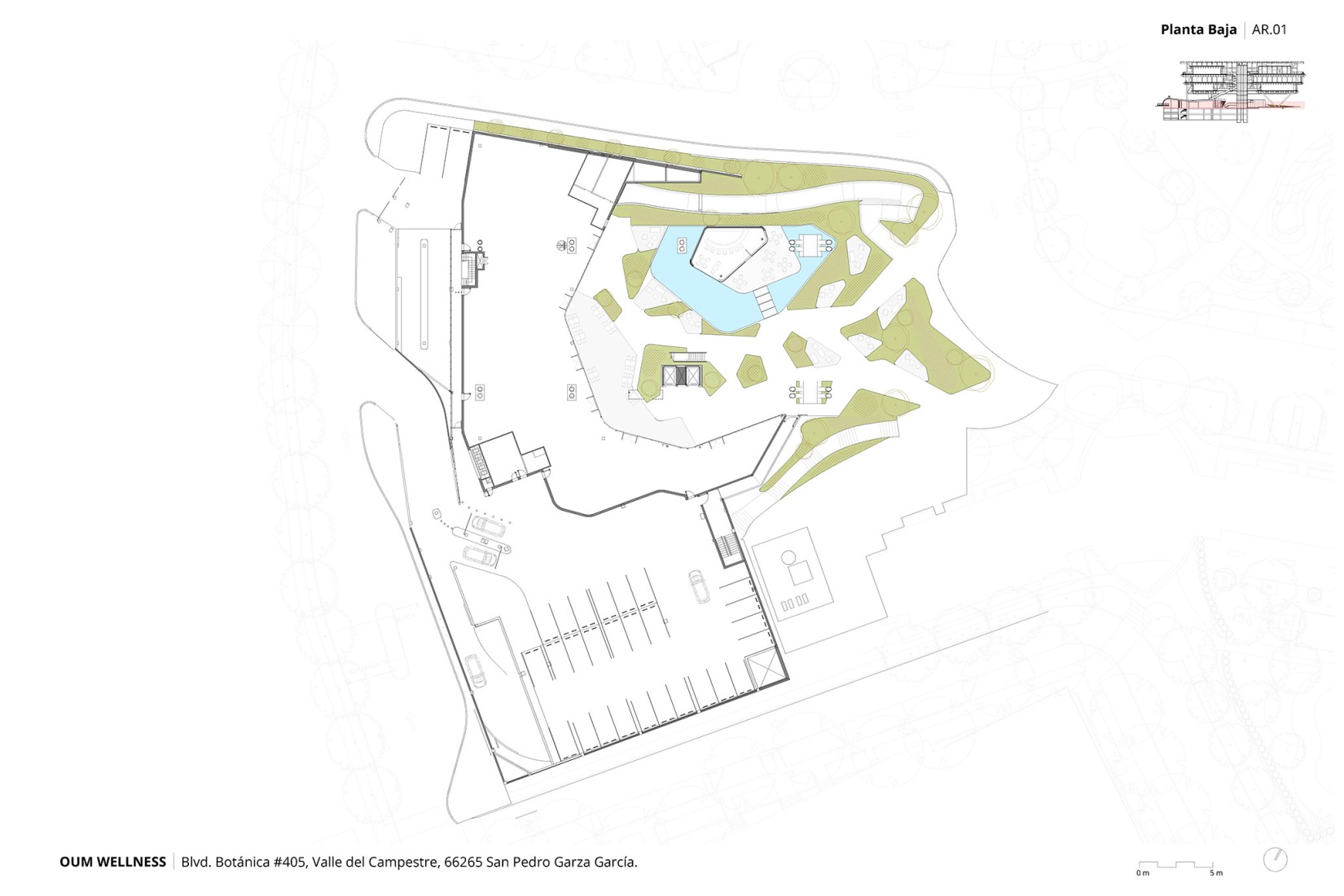As is usual in Picharchitects/PichAguilera projects, the project grows with great environmental ambition and energy efficiency. The building proposes an architecture that seeks to achieve optimal passive and natural performance by itself, using different bioclimatic strategies already known by these architects, which are added to a lattice on the concrete façade to reduce energy consumption and improve the thermal comfort of the building. building.

OUM Wellness by Picharchitects/PichAguilera. Photograph by The Raws.
Project description by Picharchitects/PichAguilera
The concept behind OUM Wellness is to create a sanctuary for wellness, where body, mind and spirit come together in harmony. Inspired by the Eastern philosophy of balance and serenity, OUM Wellness seeks to offer an urban refuge where individuals can find inner peace, physical revitalisation and connection with their inner self.
Balance in this project translates into a feeling of total wellbeing. Therefore, it seeks to offer visitors a place where they can enjoy time for themselves, take a deep breath, relax from daily stress, replenish their strength and energy, and raise their self-perception.
Location and site
The architectural design of the project stands out as a visual landmark on the main street leading to the urban complex, offering a distinctive identification of the site. It is composed of two bodies, creating living spaces and unique perspectives on the corner. The base integrates with the surrounding topography, while above, a compact volume follows a radial direction reflecting the layout of the other buildings in the area. At the top, an open courtyard connects the different elements, creating a sense of continuity in the space.

OUM Wellness by Picharchitects/PichAguilera. Photograph by The Raws.
Interiors
Visitors have the option of exploring the building in two ways: on foot, enjoying a leisurely stroll, or using the glass elevators that travel along the vertical courtyard, providing a unique visual experience at all times. On the ground floor we have the uses with the greatest public affluence, extending into some of the free areas of the exterior atrium. The upper body is structured through a series of stairs that seek a sense of spaciousness and thermal comfort accompanied by visuals to have a complete reading of the project from the inside.
Exterior
The exterior design of OUM Wellness reflects its commitment to sustainability and harmony with the natural environment. The building blends harmoniously into its surroundings, with soft lines and organic forms that merge with the landscape. As the project has a particular environmental and energy ambition, it proposes an architecture that achieves optimal natural performance itself. This is achieved primarily through its concrete façade developed between Cemex Global R&D and the R&D department of Picharchitects. The element is made up of two layers, the first of Resilia concrete represents the structural function, forming the base for incorporating the porous concrete, and at the same time lends a finish that adapts to the desired shape, in this case to an organic, undulating form. The second of Pervia porous concrete represents the bioclimatic behaviour of the piece, highlighting its intrinsic properties, such as its capacity for heat accumulation and water permeability.
The energy demand that will eventually be required throughout the year will be offset by the production of renewable energy, produced on the site itself. This is the purpose of the large upper pergola, made up of photovoltaic panels which, in addition to providing shade, act as an electricity generation plant.

OUM Wellness by Picharchitects/PichAguilera. Photograph by The Raws.
Sustainability and circular economy
The project has the highest environmental and energy ambition. The building must be able to produce the same energy it consumes throughout the year. An architecture is proposed that achieves an optimal natural performance by itself, so that the final use is low in energy and added mechanical equipment. To this end, the design tries to intensively involve the bioclimatic behaviour of the systems, enhancing thermodynamic flows, as well as other natural resources in obtaining interior comfort.
The configuration of the central courtyard, combined with the open topography of the ground floor, favours a permanent draught of rising air, which is cooled by contact with the horizontal water surface of the atrium, while the shade and evapotranspiration of the vegetation in height will help to temper this enclosure.
The lattice panels along the longitudinal facades made of porous concrete elements modulate solar radiation and dissipate heat, as well as cooling and channelling incoming breezes into the atrium. The inertial properties of the concrete structure temper the peaks and reduce the use of mechanical systems.

OUM Wellness by Picharchitects/PichAguilera. Photograph by The Raws.
The energy demand that is ultimately required throughout the year is compensated for by an equivalent production of renewable energy, produced on the site itself. This is the purpose of the large upper pergola, made up of photovoltaic panels which, in addition to providing shade, will act as an electricity generating plant.
The project tries to emerge from the approach of a global view, confronted with the very special circumstances of the climate and culture of Monterrey.
The architecture incorporates the striking scenery of the jagged mountain range and the extreme character of the place. The result does not respond to preconceived ideas or styles, but explores the expressive registers of the systems it necessarily combines.











































